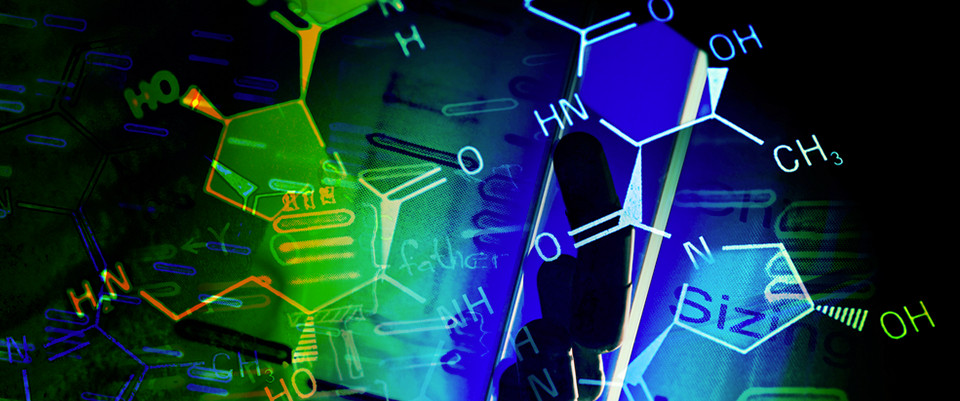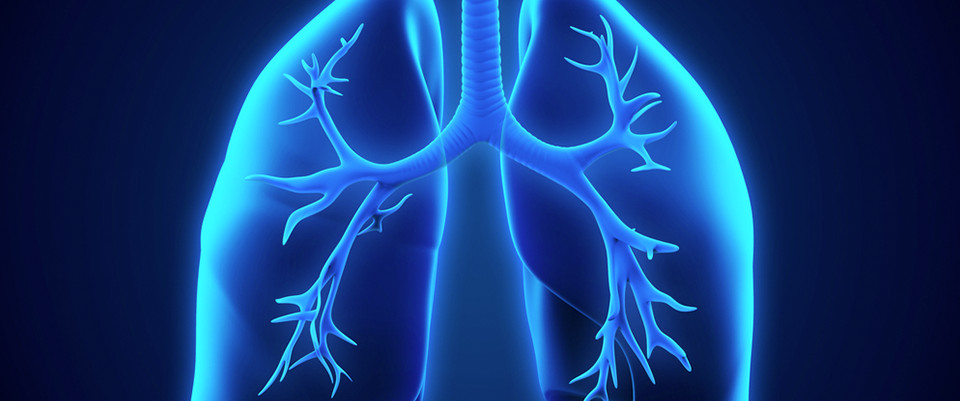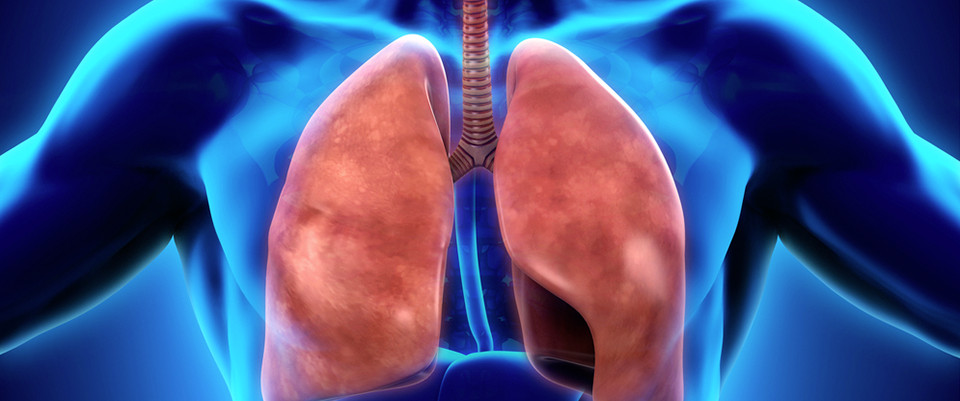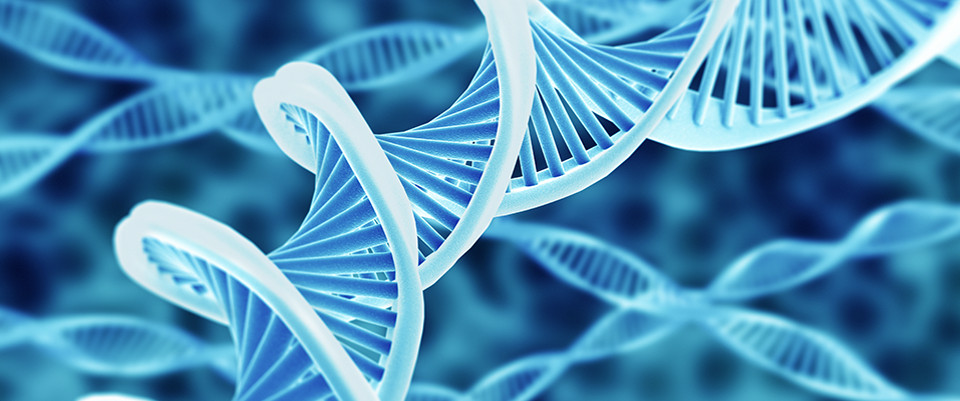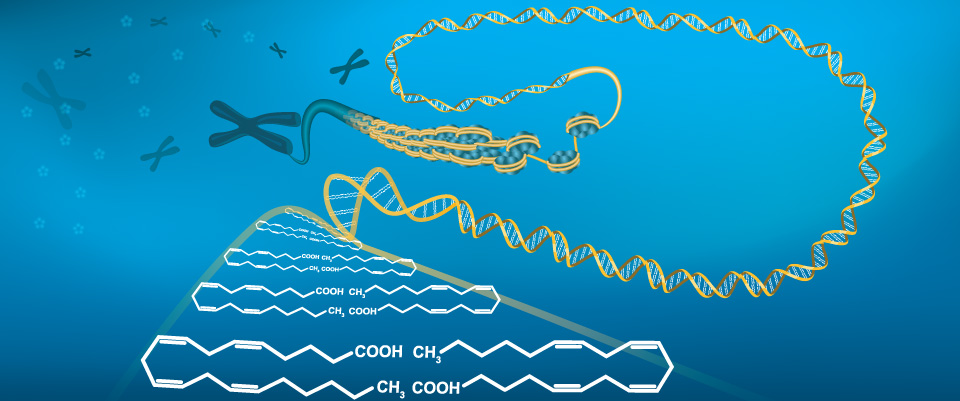PubMed
Serum Metabolomic Profiling of Sulfur Mustard-Exposed Individuals Using (1) HNuclear Magnetic Resonance Spectroscopy.
Related Articles
Serum Metabolomic Profiling of Sulfur Mustard-Exposed Individuals Using (1) HNuclear Magnetic Resonance Spectroscopy.
Basic Clin Pharmacol Toxicol. 2015 Jul 14;
Authors: Zamani Z, Ghanei M, Panahi Y, Arjmand M, Sadeghi S, Mirkhani F, Parvin S, Salehi M, Sahebkar A, Vahabi F
Abstract
Sulfur mustard is an alkylating agent that reacts with different cellular components, causing acute and delayed complications that may remain for decades after exposure. The present study aimed to identify differentially expressed metabolites between mustard-exposed individuals suffering from chronic complications compared with unexposed individuals as the control group. Serum samples were obtained from 15 mustard-exposed individuals and 15 apparently healthy unexposed individuals. Metabolomic profiling was performed using (1) HNMR spectroscopy, and analyses were carried out using Chenomex and MATLAB softwares. Metabolites were identified using Human Metabolic Data Base (HMDB), and the main metabolic pathways were identified using Metaboanalyst software. Chemometric analysis of serum samples identified 11 differentially expressed metabolites between mustard-exposed and unexposed groups. The main pathways that were influenced by sulfur mustard exposure were related to vitamin B6 (down-regulation), bile acid (up-regulation) and tryptophan (down-regulation) metabolism. Metabolism of vitamin B6, bile acids and tryptophan are the most severely impaired pathways in individuals suffering from chronic mustard-induced complications. These findings may find implications in the monitoring of exposed patients and identification of new therapeutic approaches. This article is protected by copyright. All rights reserved.
PMID: 26177671 [PubMed - as supplied by publisher]
Acylcarnitines are anticoagulants that inhibit factor Xa and are reduced in venous thrombosis based on metabolomics data.
Related Articles
Acylcarnitines are anticoagulants that inhibit factor Xa and are reduced in venous thrombosis based on metabolomics data.
Blood. 2015 Jul 14;
Authors: Deguchi H, Banerjee Y, Trauger S, Siuzdak G, Kalisiak E, Fernández JA, Hoang L, Tran M, Yegneswaran S, Elias DJ, Griffin JH
Abstract
In many deep vein thrombosis and pulmonary embolism (VTE) patients, biomarkers or genetic risk factors have not been identified. To discover novel plasma metabolites associated with VTE risk, we employed liquid chromatography-mass spectrometry-based untargeted metabolomics which does not target any specific metabolites. Using the Scripps Venous Thrombosis Registry population for a case-control study, we discovered that 10:1 and 16:1 acylcarnitines were low in plasmas of the VTE patient group compared to matched controls. Data from targeted metabolomics studies showed that several long-chain acylcarnitines (10:1, 12:0, 12:2, 18:1 and 18:2) were lower in the VTE group. Clotting assays were used to evaluate a causal relationship for low acylcarnitines in VTE patients. Various acylcarnitines inhibited factor Xa-initiated clotting. Inhibition of factor Xa by acylcarnitines was greater for longer acyl chain. Mechanistic studies showed that 16:0 acylcarnitine had anticoagulant activity in the absence of factor Va or phospholipids. Surface plasmon resonance investigations revealed that 16:0 acylcarnitine was bound to factor Xa and that binding did not require the γ-carboxy glutamic acid domain. In summary, our study identified low plasma levels of acylcarnitines in VTE patients and showed that acylcarnitines have anticoagulant activity related to an ability to bind and inhibit factor Xa.
PMID: 26175037 [PubMed - as supplied by publisher]
Metabolomics identifies the intersection of phosphoethanolamine with menaquinone-triggered apoptosis in an in vitro model of leukemia.
Related Articles
Metabolomics identifies the intersection of phosphoethanolamine with menaquinone-triggered apoptosis in an in vitro model of leukemia.
Mol Biosyst. 2015 Jul 15;
Authors: Dhakshinamoorthy S, Dinh NT, Skolnick J, Styczynski MP
Abstract
Altered metabolism is increasingly acknowledged as an important aspect of cancer, and thus serves as a potentially fertile area for the identification of therapeutic targets or leads. Our recent work using transcriptional data to predict metabolite levels in cancer cells led to preliminary evidence of the antiproliferative role of menaquinone (vitamin K2) in the Jurkat cell line model of acute lymphoblastic leukemia. However, nothing is known about the direct metabolic impacts of menaquinone in cancer, which could provide insights into its mechanism of action. Here, we used metabolomics to investigate the process by which menaquinone exerts antiproliferative activity on Jurkat cells. We first validated the dose-dependent, semi-selective, pro-apoptotic activity of menaquinone treatment on Jurkat cells relative to non-cancerous lymphoblasts. We then used mass spectrometry-based metabolomics to identify systems-scale changes in metabolic dynamics that are distinct from changes induced in non-cancerous cells or by other chemotherapeutics. One of the most significantly affected metabolites was phosphoethanolamine, which exhibited a two-fold increase in menaquinone-treated Jurkat cells compared to vehicle-treated cells at 24 h, growing to a five-fold increase at 72 h. Phosphoethanolamine elevation was observed prior to the induction of apoptosis, and was not observed in menaquinone-treated lymphoblasts or chemotherapeutic-treated Jurkat cells. We also validated the link between menaquinone and phosphoethanolamine in an ovarian cancer cell line, suggesting potentially broad applicability of their relationship. This metabolomics-based work is the first detailed characterization of the metabolic impacts of menaquinone treatment and the first identified link between phosphoethanolamine and menaquinone-induced apoptosis.
PMID: 26175011 [PubMed - as supplied by publisher]
N(8)-acetylspermidine as a potential plasma biomarker for Snyder-Robinson syndrome identified by clinical metabolomics.
Related Articles
N(8)-acetylspermidine as a potential plasma biomarker for Snyder-Robinson syndrome identified by clinical metabolomics.
J Inherit Metab Dis. 2015 Jul 15;
Authors: Abela L, Simmons L, Steindl K, Schmitt B, Mastrangelo M, Joset P, Papuc M, Sticht H, Baumer A, Crowther LM, Mathis D, Rauch A, Plecko B
Abstract
Clinical metabolomics has emerged as a powerful tool to study human metabolism in health and disease. Comparative statistical analysis of untargeted metabolic profiles can reveal perturbations of metabolite levels in diseases and thus has the potential to identify novel biomarkers. Here we have applied a simultaneous genetic-metabolomic approach in twin boys with epileptic encephalopathy of unclear etiology. Clinical exome sequencing identified a novel missense mutation in the spermine synthase gene (SMS) that causes Snyder-Robinson syndrome (SRS). Untargeted plasma metabolome analysis revealed significantly elevated levels of N(8)-acetylspermidine, a precursor derivative of spermine biosynthesis, as a potential novel plasma biomarker for SRS. This result was verified in a third patient with genetically confirmed SRS. This study illustrates the potential of metabolomics as a translational technique to support exome data on a functional and clinical level.
PMID: 26174906 [PubMed - as supplied by publisher]
Metabolomic profiling for the identification of novel diagnostic markers in prostate cancer.
Related Articles
Metabolomic profiling for the identification of novel diagnostic markers in prostate cancer.
Expert Rev Mol Diagn. 2015 Jul 15;:1-14
Authors: Lucarelli G, Rutigliano M, Galleggiante V, Giglio A, Palazzo S, Ferro M, Simone C, Bettocchi C, Battaglia M, Ditonno P
Abstract
Metabolomic profiling offers a powerful methodology for understanding the perturbations of biochemical systems occurring during a disease process. During neoplastic transformation, prostate cells undergo metabolic reprogramming to satisfy the demands of growth and proliferation. An early event in prostate cell transformation is the loss of capacity to accumulate zinc. This change is associated with a higher energy efficiency and increased lipid biosynthesis for cellular proliferation, membrane formation and cell signaling. Moreover, recent studies have shown that sarcosine, an N-methyl derivative of glycine, was significantly increased during disease progression from normal to localized to metastatic prostate cancer. Mapping the metabolomic profiles to their respective biochemical pathways showed an upregulation of androgen-induced protein synthesis, an increased amino acid metabolism and a perturbation of nitrogen breakdown pathways, along with high total choline-containing compounds and phosphocholine levels. In this review, the role of emerging biomarkers is summarized, based on the current understanding of the prostate cancer metabolome.
PMID: 26174441 [PubMed - as supplied by publisher]
Quercetin modulates keratoconus metabolism in vitro.
Related Articles
Quercetin modulates keratoconus metabolism in vitro.
Cell Biochem Funct. 2015 Jul 14;
Authors: McKay TB, Sarker-Nag A, Lyon D, Asara JM, Karamichos D
Abstract
Corneal scarring is the result of a disease, infection or injury. The resulting scars cause significant loss of vision or even blindness. To-date, the most successful treatment is corneal transplantation, but it does not come without side effects. One of the corneal dystrophies that are correlated with corneal scarring is keratoconus (KC). The onset of the disease is still unknown; however, altered cellular metabolism has been linked to promoting the fibrotic phenotype and therefore scarring. We have previously shown that human keratoconus cells (HKCs) have altered metabolic activity when compared to normal human corneal fibroblasts (HCFs). In our current study, we present evidence that quercetin, a natural flavonoid, is a strong candidate for regulating metabolic activity of both HCFs and HKCs in vitro and therefore a potential therapeutic to target the altered cellular metabolism characteristic of HKCs. Targeted mass spectrometry-based metabolomics was performed on HCFs and HKCs with and without quercetin treatment in order to identify variations in metabolite flux. Overall, our study reveals a novel therapeutic target OF Quercetin on corneal stromal cell metabolism in both healthy and diseased states. Clearly, further studies are necessary in order to dissect the mechanism of action of quercetin. Copyright © 2015 John Wiley & Sons, Ltd.
PMID: 26173740 [PubMed - as supplied by publisher]
The role of glycosylation in IBD.
Related Articles
The role of glycosylation in IBD.
Nat Rev Gastroenterol Hepatol. 2014 Oct;11(10):588-600
Authors: Theodoratou E, Campbell H, Ventham NT, Kolarich D, Pučić-Baković M, Zoldoš V, Fernandes D, Pemberton IK, Rudan I, Kennedy NA, Wuhrer M, Nimmo E, Annese V, McGovern DP, Satsangi J, Lauc G
Abstract
A number of genetic and immunological studies give impetus for investigating the role of glycosylation in IBD. Experimental mouse models have helped to delineate the role of glycosylation in intestinal mucins and to explore the putative pathogenic role of glycosylation in colitis. These experiments have been extended to human studies investigating the glycosylation patterns of intestinal mucins as well as levels of glycans of serum glycoproteins and expression of glycan receptors. These early human studies have generated interesting hypotheses regarding the pathogenic role of glycans in IBD, but have generally been restricted to fairly small underpowered studies. Decreased glycosylation has been observed in the intestinal mucus of patients with IBD, suggesting that a defective inner mucus layer might lead to increased bacterial contact with the epithelium, potentially triggering inflammation. In sera, decreased galactosylation of IgG has been suggested as a diagnostic marker for IBD. Advances in glycoprofiling technology make it technically feasible and affordable to perform high-throughput glycan pattern analyses and to build on previous work investigating a much wider range of glycan parameters in large numbers of patients.
PMID: 24912389 [PubMed - indexed for MEDLINE]
metabolomics; +71 new citations
71 new pubmed citations were retrieved for your search.
Click on the search hyperlink below to display the complete search results:
metabolomics
These pubmed results were generated on 2015/07/15PubMed comprises more than 24 million citations for biomedical literature from MEDLINE, life science journals, and online books.
Citations may include links to full-text content from PubMed Central and publisher web sites.
metabolomics; +36 new citations
36 new pubmed citations were retrieved for your search.
Click on the search hyperlink below to display the complete search results:
metabolomics
These pubmed results were generated on 2015/07/11PubMed comprises more than 24 million citations for biomedical literature from MEDLINE, life science journals, and online books.
Citations may include links to full-text content from PubMed Central and publisher web sites.
Validation of a multi-analyte HPLC-DAD method for determination of uric acid, creatinine, homovanillic acid, niacinamide, hippuric acid, indole-3-acetic acid and 2-methylhippuric acid in human urine.
Validation of a multi-analyte HPLC-DAD method for determination of uric acid, creatinine, homovanillic acid, niacinamide, hippuric acid, indole-3-acetic acid and 2-methylhippuric acid in human urine.
J Chromatogr B Analyt Technol Biomed Life Sci. 2015 Jun 24;998-999:40-44
Authors: Remane D, Grunwald S, Hoeke H, Mueller A, Roeder S, von Bergen M, Wissenbach DK
Abstract
During the last decades exposure sciences and epidemiological studies attracts more attention to unravel the mechanisms for the development of chronic diseases. According to this an existing HPLC-DAD method for determination of creatinine in urine samples was expended for seven analytes and validated. Creatinine, uric acid, homovanillic acid, niacinamide, hippuric acid, indole-3-acetic acid, and 2-methylhippuric acid were separated by gradient elution (formate buffer/methanol) using an Eclipse Plus C18 Rapid Resolution column (4.6mm×100mm). No interfering signals were detected in mobile phase. After injection of blank urine samples signals for the endogenous compounds but no interferences were detected. All analytes were linear in the selected calibration range and a non weighted calibration model was chosen. Bias, intra-day and inter-day precision for all analytes were below 20% for quality control (QC) low and below 10% for QC medium and high. The limits of quantification in mobile phase were in line with reported reference values but had to be adjusted in urine for homovanillic acid (45mg/L), niacinamide 58.5(mg/L), and indole-3-acetic acid (63mg/L). Comparison of creatinine data obtained by the existing method with those of the developed method showing differences from -120mg/L to +110mg/L with a mean of differences of 29.0mg/L for 50 authentic urine samples. Analyzing 50 authentic urine samples, uric acid, creatinine, hippuric acid, and 2-methylhippuric acid were detected in (nearly) all samples. However, homovanillic acid was detected in 40%, niacinamide in 4% and indole-3-acetic acid was never detected within the selected samples.
PMID: 26151191 [PubMed - as supplied by publisher]
Metabolic dysregulation induced in Plasmodium falciparum by dihydroartemisinin and other front line antimalarial drugs.
Metabolic dysregulation induced in Plasmodium falciparum by dihydroartemisinin and other front line antimalarial drugs.
J Infect Dis. 2015 Jul 6;
Authors: Cobbold SA, Chua HH, Nijagal B, Creek DJ, Ralph SA, McConville MJ
Abstract
Detailed information on the mode of action of antimalarial drugs can be used to improve existing drugs, identify new drug targets and understand the basis of drug resistance. In this study we describe the use of a time-resolved, mass spectrometric-based metabolite profiling approach to map the metabolic perturbations induced by a panel of clinical antimalarial drugs and inhibitors on Plasmodium falciparum asexual blood stages. Drug-induced changes in metabolite levels in P. falciparum-infected erythrocytes were monitored over time using gas chromatography-mass spectrometry and liquid chromatography-mass spectrometry and changes in specific metabolic fluxes confirmed by non-stationary (13)C-glucose labelling. Dihydroartemisinin (DHA) was found to disrupt haemoglobin catabolism within one hour of exposure, resulting in a transient decrease in haemoglobin-derived peptides. Unexpectedly, DHA also disrupted pyrimidine biosynthesis resulting in increased (13)C-glucose flux towards malate production, potentially explaining the susceptibility of P. falciparum to DHA during early blood-stage development. Unique metabolic signatures were also found for atovaquone, chloroquine, proguanil, cycloguanil and methylene blue. We also show this approach can be used to identify the mode of action of novel antimalarials, such as the compound Torin 2, which we show here inhibits haemoglobin catabolism.
PMID: 26150544 [PubMed - as supplied by publisher]
Cross-sectional examination of metabolites and metabolic phenotypes in uremia.
Cross-sectional examination of metabolites and metabolic phenotypes in uremia.
BMC Nephrol. 2015;16(1):98
Authors: Kalim S, Clish CB, Deferio JJ, Ortiz G, Moffet AS, Gerszten RE, Thadhani R, Rhee EP
Abstract
BACKGROUND: Although metabolomic approaches have begun to document numerous changes that arise in end stage renal disease (ESRD), how these alterations relate to established metabolic phenotypes in uremia is unknown.
METHODS: In 200 incident hemodialysis patients we used partial least squares discriminant analysis to identify which among 166 metabolites could best discriminate individuals with or without diabetes, and across tertiles of body mass index, serum albumin, total cholesterol, and systolic blood pressure.
RESULTS: Our data do not recapitulate metabolomic signatures of diabetes and obesity identified among individuals with normal renal function (e.g. elevations in branched chain and aromatic amino acids) and highlight several potential markers of diabetes status specific to ESRD, including xanthosine-5-phosphate and vanillylmandelic acid. Further, our data identify significant associations between elevated tryptophan and long-chain acylcarnitine levels and both decreased total cholesterol and systolic blood pressure in ESRD. Higher tryptophan levels were also associated with higher serum albumin levels, but this may reflect tryptophan's significant albumin binding. Finally, an examination of the uremic retention solutes captured by our platform in relation to 24 clinical phenotypes provides a framework for investigating mechanisms of uremic toxicity.
CONCLUSIONS: In sum, these studies leveraging metabolomic and metabolic phenotype data acquired in a well-characterized ESRD cohort demonstrate striking differences from metabolomics studies in the general population, and may provide clues to novel functional pathways in the ESRD population.
PMID: 26149577 [PubMed - as supplied by publisher]
Metabolomic Responses of Human Hepatocytes to Emodin, Aristolochic Acid, and Triptolide: Chemicals Purified from Traditional Chinese Medicines.
Metabolomic Responses of Human Hepatocytes to Emodin, Aristolochic Acid, and Triptolide: Chemicals Purified from Traditional Chinese Medicines.
J Biochem Mol Toxicol. 2015 Jul 7;
Authors: Liu X, Liu Y, Cheng M, Xiao H
Abstract
The present study was undertaken to investigate the metabolic responses of human liver cells HL-7702 on chemicals purified from traditional Chinese medicine: emodin, triptolide, and aristolochic acid. Cytotoxicity tests demonstrated a dose-dependent toxic effect of emodin, triptolide, and aristolochic acid on HL7702 cells for 48 h. Emodin (14 μM), aristolochic acid (12 μg/mL), or triptolide (18 nM) was individually administrated to HL7702 and cell samples were collected after 48 h for metabolites extraction and analysis. Pattern recognition analysis reflected the significant difference in metabolic profiles between chemical-treated groups and the control group. Finally, eight metabolites including N1 -acetylspermidine, Glu Gly, N-undecanoylglycine, C16 sphinganine, sphinganine, glutathione, l-palmitoylcarnitine, and elaidic carnitine were detected as potential common biomarkers. Three pathways including sphinganine metabolism, fatty acid oxidation, and oxidative stress were identified. Our findings indicated that metabolomics would be an efficient approach to understand the molecular mechanism of hepatotoxicity induced by chemicals.
PMID: 26149242 [PubMed - as supplied by publisher]
Shedding metabo'light' on the search for sepsis biomarkers.
Shedding metabo'light' on the search for sepsis biomarkers.
Crit Care. 2015;19(1):277
Authors: Dos Santos CC
Abstract
The clinical presentation of severe infection with generalized inflammation is similar, if not identical, to systemic inflammation induced by sterile tissue injury. Novel models and unbiased technologies are urgently needed for biomarker identification and disease profiling in sepsis. Here we briefly review the article of Kamisoglu and colleagues in this issue of Critical Care on comparing metabolomics data from different studies to assess whether responses elicited by endotoxin recapitulate, at least in part, those seen in clinical sepsis.
PMID: 26148483 [PubMed - as supplied by publisher]
Glyoxylate, a new marker metabolite of type 2 diabetes.
Related Articles
Glyoxylate, a new marker metabolite of type 2 diabetes.
J Diabetes Res. 2014;2014:685204
Authors: Nikiforova VJ, Giesbertz P, Wiemer J, Bethan B, Looser R, Liebenberg V, Ruiz Noppinger P, Daniel H, Rein D
Abstract
Type 2 diabetes (T2D) is characterized by a variety of metabolic impairments that are closely linked to nonenzymatic glycation reactions of proteins and peptides resulting in advanced glycation end-products (AGEs). Reactive aldehydes derived from sugars play an important role in the generation of AGEs. Using metabolite profiling to characterize human plasma from diabetic versus nondiabetic subjects we observed in a recent study that the reactive aldehyde glyoxylate was increased before high levels of plasma glucose, typical for a diabetic condition, could be measured. Following this observation, we explored the relevance of increased glyoxylate in diabetic subjects and in diabetic C57BLKS/J-Lepr (db/db (-/-)) mice in the pathophysiology of diabetes. A retrospective study using samples of long-term blood donors revealed that glyoxylate levels unlike glucose levels became significantly elevated up to 3 years prior to diabetes diagnosis (difference to control P = 0.034). Elevated glyoxylate levels impact on newly identified mechanisms linking hyperglycemia and AGE production with diabetes-associated complications such as diabetic nephropathy. Glyoxylate in its metabolic network may serve as an early marker in diabetes diagnosis with predictive qualities for associated complications and as potential to guide the development of new antidiabetic therapies.
PMID: 25525609 [PubMed - indexed for MEDLINE]
Radiosensitization by a novel Bcl-2 and Bcl-XL inhibitor S44563 in small-cell lung cancer.
Related Articles
Radiosensitization by a novel Bcl-2 and Bcl-XL inhibitor S44563 in small-cell lung cancer.
Cell Death Dis. 2014;5:e1423
Authors: Loriot Y, Mordant P, Dugue D, Geneste O, Gombos A, Opolon P, Guegan J, Perfettini JL, Pierre A, Berthier LK, Kroemer G, Soria JC, Depil S, Deutsch E
Abstract
Radiotherapy has a critical role in the treatment of small-cell lung cancer (SCLC). The effectiveness of radiation in SCLC remains limited as resistance results from defects in apoptosis. In the current study, we investigated whether using the Bcl-2/Bcl-XL inhibitor S44563 can enhance radiosensitivity of SCLC cells in vitro and in vivo. In vitro studies confirmed that S44563 caused SCLC cells to acquire hallmarks of apoptosis. S44563 markedly enhanced the sensitivity of SCLC cells to radiation, as determined by a clonogenic assay. The combination of S44563 and cisplatin-based chemo-radiation showed a significant tumor growth delay and increased overall survival in mouse xenograft models. This positive interaction was greater when S44563 was given after the completion of the radiation, which might be explained by the radiation-induced overexpression of anti-apoptotic proteins secondary to activation of the NF-κB pathway. These data underline the possibility of combining IR and Bcl-2/Bcl-XL inhibition in the treatment of SCLC as they underscore the importance of administering conventional and targeted therapies in an optimal sequence.
PMID: 25232677 [PubMed - indexed for MEDLINE]
Molecular and physiological stages of priming: how plants prepare for environmental challenges.
Related Articles
Molecular and physiological stages of priming: how plants prepare for environmental challenges.
Plant Cell Rep. 2014 Dec;33(12):1935-49
Authors: Gamir J, Sánchez-Bel P, Flors V
Abstract
Being sessile organisms, plants must respond to various challenges in the environment. The priming process consists of three clear stages. The first stage includes all the cellular changes in the absence of the challenge so-called pre-challenge priming stage. These changes are expected to be rather subtle, affecting the preparation of the plant to properly manage subsequent responses to pathogens with no major fitness costs. Most of the research that has been conducted at this stage has been dedicated to the study of changes in gene expression and protein phosphorylation. However, the metabolic changes that occur during the pre-challenge priming stage are poorly understood. The second stage affects the early to late stages of the defence response, which occurs after the interaction with a pathogen has been established. Most studies involving priming are dedicated to the molecular events that take place during this stage. Most studies have shown that defence priming is strongly hormonally regulated; however, there is also evidence of the involvement of phenolic derivative compounds and many other secondary metabolites, leading to stronger and faster plant responses. The third priming phase ranges from long lasting defence priming to trans-generational acquired resistance. Long-term metabolic transitions, that occur in the offspring of primed plants, remain to be elucidated. Here we review existing information in the literature that relates to the metabolic changes that occur during all three defence priming stages and highlight the metabolic transitions that are associated with the stimulation of priming and the characteristics of the pathogens whenever possible.
PMID: 25113544 [PubMed - indexed for MEDLINE]
A 1H-NMR Based Study on Hemolymph Metabolomics in Eri Silkworm after Oral Administration of 1-Deoxynojirimycin.
A 1H-NMR Based Study on Hemolymph Metabolomics in Eri Silkworm after Oral Administration of 1-Deoxynojirimycin.
PLoS One. 2015;10(7):e0131696
Authors: Deng MJ, Lin XD, Lin QT, Wen DF, Zhang ML, Wang XQ, Gao HC, Xu JP
Abstract
We aimed to investigate whether 1-deoxynojirimycin (DNJ) modulates glycometabolism and has toxicity in Eri silkworm (Samia cynthia ricini, Saturniidae). In this paper, hemolymph metabolites were used to explore metabolic changes after oral administration of DNJ or mulberry latex and to characterize the biological function of DNJ at the metabolic and systemic levels. Hemolymph samples were collected from fourth-instar larvae of Eri silkworm and ex-vivo high-resolution 1H nuclear magnetic resonance (NMR) spectra were acquired from the collected hemolymph samples. Then the obtained spectra were analyzed by principal component analysis (PCA) and independent-samples t-test. Metabolic pattern recognition analysis of hemolymph samples indicated that the groups of 0.25% DNJ, latex, and the mixture of 0.5% DNJ and latex (1:1) were significantly different from the control group. Moreover, compared to the control group, the groups of 0.25% DNJ, latex, and the mixture of 0.5% DNJ and latex (1:1) showed the decreased levels of citrate, succinate, fumarate, malate, and glutamine in hemolymph, the groups of 0.25% DNJ and the mixture of 0.5% DNJ and latex (1:1) showed the increased levels of trehalose and lactate. In addition, mulberry leaves exude latex was highly toxic to Eri silkworm because rich unidentified high-molecular-weight factor (s) acted as toxic substances. In our results, latex caused 20 deaths among 50 fourth-instar larvae of Eri silkmoth, but DNJ or the mixture did not caused death. All these results suggest that DNJ has a positive impact on the reverse glycometabolism by modulating glycometabolism and inhibiting glucogenesis and energy metabolism. DNJ is a secure substance as a single-ingredient antidiabetic medicine due to its nontoxicity and bioactivity.
PMID: 26148185 [PubMed - as supplied by publisher]
Data Normalization of (1)H-NMR Metabolite Fingerprinting Datasets in the Presence of Unbalanced Metabolite Regulation.
Data Normalization of (1)H-NMR Metabolite Fingerprinting Datasets in the Presence of Unbalanced Metabolite Regulation.
J Proteome Res. 2015 Jul 6;
Authors: Hochrein J, Zacharias HU, Taruttis F, Samol C, Engelmann JC, Spang R, Oefner PJ, Gronwald W
Abstract
Data normalization is an essential step in NMR-based metabolomics. Conducted properly, it improves data quality and removes unwanted biases. The choice of the appropriate normalization method is critical and depends on the inherent properties of the dataset in question. In particular, the presence of unbalanced metabolic regulation, where the different specimens and cohorts under investigation do not contain approximately equal shares of up- and down-regulated features, may strongly influence data normalization. Here, we demonstrate the suitability of the Shapiro-Wilk-Test to detect such unbalanced regulation. Next, employing a Latin-square design consisting of eight metabolites spiked into a urine specimen at eight different known concentrations, we show that commonly used normalization and scaling methods fail to retrieve true metabolite concentrations in the presence of increasing amounts of glucose added to simulate unbalanced regulation. However, by learning the normalization parameters on a subset of non-regulated features only, Linear Baseline Normalization, Probabilistic Quotient Normalization and Variance Stabilization Normalization were found to account well for different dilutions of the samples without distorting the true spike-in levels even in the presence of marked unbalanced metabolic regulation. Finally, the methods described were applied successfully to a real world example of unbalanced regulation, namely a set of plasma specimens collected from patients with and without acute kidney injury after cardiac surgery with cardiopulmonary bypass use.
PMID: 26147738 [PubMed - as supplied by publisher]
Serum metabolomics in animal models and human disease.
Serum metabolomics in animal models and human disease.
Curr Opin Clin Nutr Metab Care. 2015 Jul 2;
Authors: James EL, Parkinson EK
Abstract
PURPOSE OF REVIEW: The aim of this study is to highlight some recent uses of serum metabolomics in human and animal studies. The main themes are the importance of understanding the underlying variation in human metabolism and the use of serum metabolomics in disease profiling.
RECENT FINDINGS: Several studies have attempted to use serum metabolomics to develop noninvasive biomarkers of disease and/or track the consequences of nutritional and genetic interventions. Many advances have been made with common changes being identified in ageing, the menopause and cancer but several problems of interpretation have emerged from these studies. These include the small sample sizes in most human studies and the differences between human and rodent metabolomes. However, a metabolic screen of over 1000 'healthy' humans (the Humsermet project) has highlighted many variables that may be used to refine the interpretation and design of previous and future human studies alike, in addition to data mining.
SUMMARY: Some common serum metabolome alterations have been identified but many inconsistencies remain. The construction of a human serum metabolome database should be informative in the design of future human and animal model studies.
PMID: 26147529 [PubMed - as supplied by publisher]

